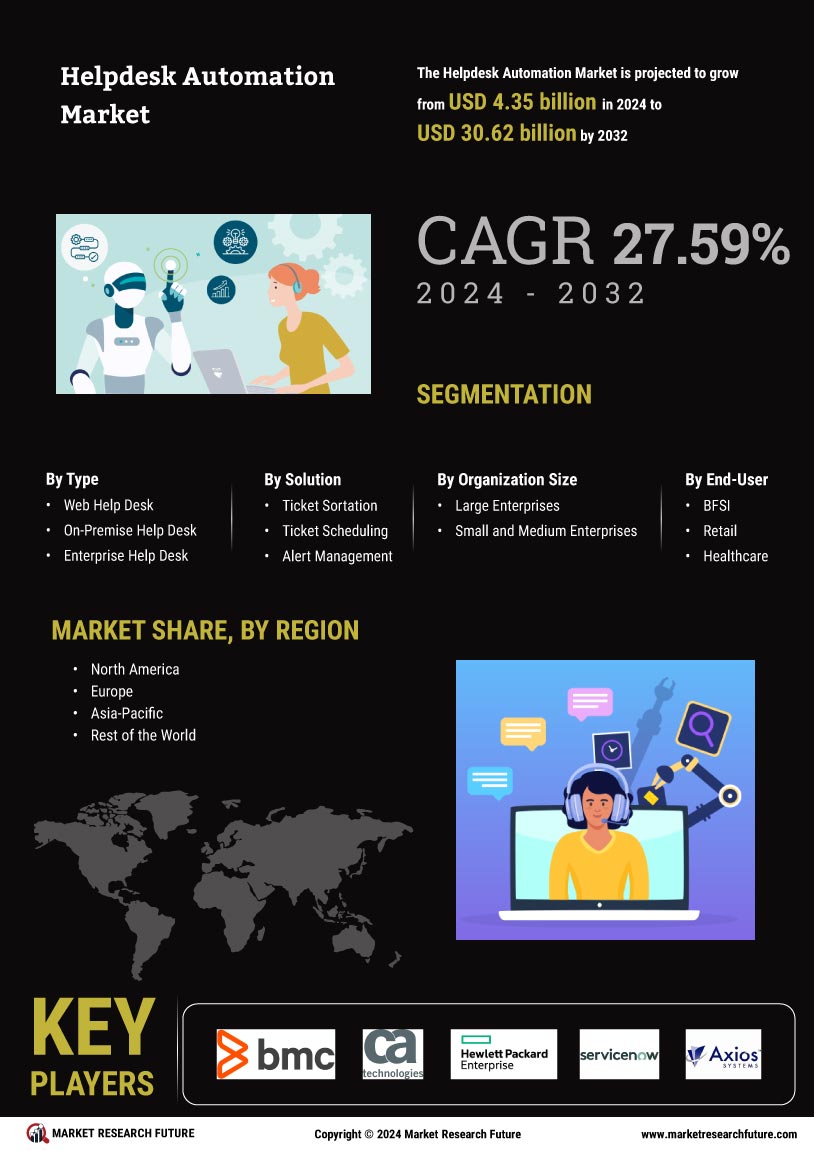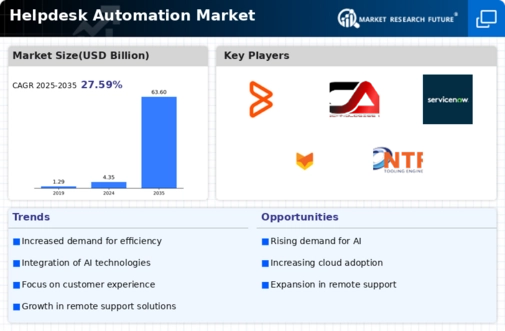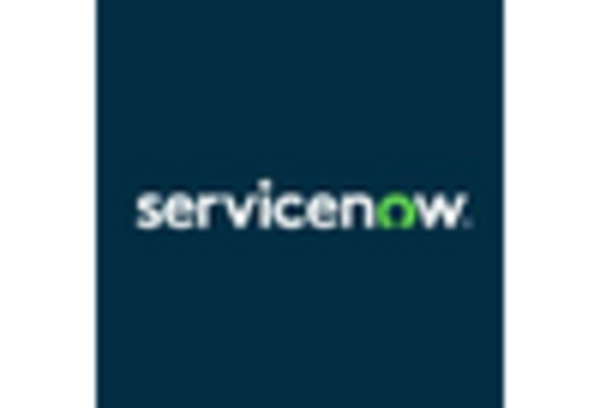The market for helpdesk automation is growing due to large R&D efforts made by the leading market players to diversify their product offerings. Contracts, mergers and acquisitions, expanded investments, and joint ventures with other companies are just a few examples of the diverse ways that significant industrial advancements can occur. Major industrial companies are developing various initiatives to increase their influence globally. The Helpdesk Automation Market Company must provide services at fair prices if it is to grow and prosper in a difficult and cutthroat industry.
One of the key strategies used by companies to please customers and grow the Helpdesk Automation Market sector globally is local production to reduce operational costs. Recent advances in helpdesk automation have greatly benefitted the BFSI industry. Major corporations in the Helpdesk Automation Market, including BMC Software, Inc. (U.S.), CA Technologies (U.S.), Hewlett Packard Enterprise Company (U.S.), Landesk Software (U.S.), and others, are trying to surge market demand by spending on research and development processes.
The world's first customer support platform, Hiver, was created for Google Workspace. From the Gmail tool they are already familiar with, Hiver helps teams provide quick and sympathetic customer assistance. This allows them to allocate, track, and collaborate on customer emails while also running the most sophisticated analytics and automation directly from the Gmail interface, saving them time from having to learn new software or switch tabs. Over 1500 businesses, from modern unicorns to established conglomerates, receive assistance from Hiver to improve the consumer experience.
Hiver powers a number of businesses, including Canva, Vacasa, Flexport, Pluralsight, Oxford Business Group, and Upwork. Hiver raised $4 million in Series A fundraising in 2018 from Kalaari Capital and Kae Capital, following an initial round of angel funding from Citrix Startup Accelerator and Paytm Founder Vijay Shekhar Sharma. And in 2022, Hiver raised an additional $22 million in Series B funding, led by K1 Capital, with participation from current investors Kalaari Capital, Kae Capital, and AngelList. Hiver entered the helpdesk software market in August 2020.
The first customer care solution to operating off of G-Suite and provide helpdesk services alongside Gmail was Hiver's solutions.
IT management products and services are offered by BMC Software Inc. (BMC). TrueSight IT operations and automation, Helix service and operations management, Control-M workflow orchestration, and Mainframe are among the products offered by the company. Furthermore, it provides a range of solutions, such as multi-cloud management, AI and machine learning, security and compliance, automation and DevOps, IT optimization, and service management. Healthcare, transportation, telecommunications, media, manufacturing, education, retail, insurance, utilities, government, military, and defense are just a few of the industries that BMC supports as clients.
In addition to Asia-Pacific, the corporation also conducts business in the Americas, Europe, the Middle East, and Africa. Houston, Texas, in the US, is home to BMC's headquarters. The BMC Helix Control-M platform, the Control-M solution, the BMC AMI offerings, and the BMC Helix Operations Management platform are among the solutions that BMC, a world leader in software solutions for the Autonomous Digital Enterprise, announced in April 2023. These solutions enable enterprise customers to use AI to gain deeper insights from their data and accelerate innovation across complex hybrid IT environments.


















Leave a Comment